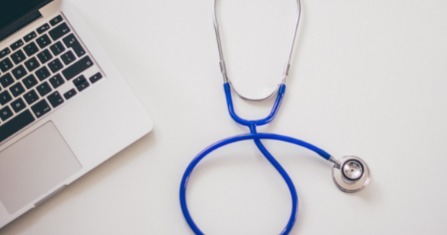EHR & Health It

While Electronic Health Record (EHR) has witnessed a huge boom in the wake of the COVID-19 pandemic, it has paved the path for the proliferation of telehealth facilities, through advanced data analytics and EHR dashboards.
It goes without saying that the outbreak of this life-threatening pandemic has exerted significant influence on population health and wellbeing. As healthcare organizations are building up efforts to treat COVID-19 patients, their IT health marketers are looking to equip them with tools to manage cases, analyze data and assess patients remotely.
Use of digital technology in our everyday life – smartphones, tablets and web enabled devices, has already radically transformed our world. A more considerable and ideal flow of information within a digital health care framework, created by Electronic Health Records (EHRs), encloses and supports digital progress and can transform the delivery of healthcare, as the information is readily available whenever and wherever needed.
One of the leading aspects of EHRs is that the health information can be generated and controlled by authorized providers in a digital format. Such data has the potential of being shared with other providers and healthcare organization such as labs, consultants, medical imaging facilities, pharmacies and clinics – carrying information from all clinicians involved in patient’s care. This does not only provide coordinated and efficient patient care but also increases patient participation, improve diagnostics and patient outcomes by reducing medical errors.
It also plays a leading role in enhancing privacy and security of patient data while serving as a cost-saving mechanism owing to reduced paperwork.
Here are 3 ways medical providers are using Electronic Health Records (EHRs) to treat COVID-19 patients:
Accelerating Use of Telehealth
In the course of this pandemic, implementation of telehealth services has skyrocketed, primarily owing to over-crowing at hospitals and the intense need for social distancing. What initially began as an endeavor to curb the spread of the virus has now become a leading technological tool facilitating healthcare across the globe.
Hence, amongst the widely accredited benefits of telehealth is the tendency to slow down the spread of the disease by keeping the people at risk out of waiting areas, maintaining social distancing and reducing their contact with healthcare personnel. It also permits patients who are not suffering from COVID-19 to continue to receive their care while staying at home. Moreover, the service has proven more useful for older people who are at higher risk during the spread of this disease.
From the provider’s perspective, telehealth increases the capacity of the providers’ staff, facilitating the treatment of a greater number of patients at one time while protecting clinicians and health professionals by reducing physical contact with the infected patients. Suspected cases or patients with mild symptoms that do not require hospital care can be monitored remotely, making the beds readily available for serious complicated cases. According to a recent survey, it has been found that telehealth has a higher satisfaction rate than other healthcare options.
Advanced Data Analytics
Data analysis is the science of analyzing raw data in order to interpret all the information. These data analytics methods can reveal valuable trends and metrics and then this information can be used to optimize procedures to enhance the overall efficiency of the healthcare facility. With the implementation of these data analytics, heath care providers can anticipate what is coming, the needs, filtering and identifying COVID-19 patients and managing the health of population in a more organized way by remaining well prepared ahead of time.
Advanced data analytics have also predominantly enhanced data access, which is of utmost concern to all providers. This is particularly of significant use in the current pandemic situation, where remote patient monitoring is the need of the hour.
At the same time, data analytics help boost interoperability, making it easy to stay updated about critical features as well as rapid demands of the pandemic. Also, since data analytics offer an analysis of telehealth visit volumes and durations, it aids the providers in gauging the demand for telemedicine solution providers across facilities and across health systems.
Implementing EHR Dashboard
In order to track COVID-19 patients, use of EHR Dashboard allows clinicians to quickly pinpoint changes in the patient’s conditions that require intervention.
This greatly assists providers to run the practice more efficiently as all the information is readily available at one place. Once logged into the EHR Dashboard, providers can go through a list of patients coming in for that particular day (including who has already checked in and is ready to be examined) along with an easy approach to the cause for the visit and clinical history.
A favorable dashboard provides a rapid glance into essential information, also permits users to generate reports or assess the data operating the analytics effortlessly – all within a few clicks.
Providers have put EHR dashboards to good use as a key component of critical decision making at crucial times such as the current COVID-19 crisis. Recognizing the fact that data interoperability remains the key to maintaining patient care, EHR dashboards allow collaboration amongst healthcare organizations and providers to allow easy access to the state’s most functional health systems and labs.
They, thereby, play a crucial role in promoting health data exchange and in making predictions about the spread of the coronavirus using trends and patterns.
However, there are still limits to the use of this innovative and life-saving digital technology. There are limitations to who can access virtual medicine (from the patients’ perspective), owing to the digital divide or economic hardship. For many people, nevertheless, electronic health tools are a major way to fight back against COVID-19.
Lire l'article complet sur : blog.curemd.com


